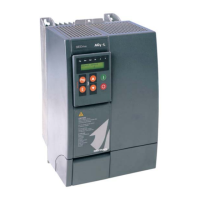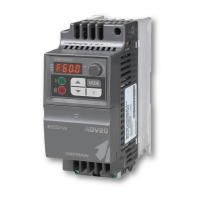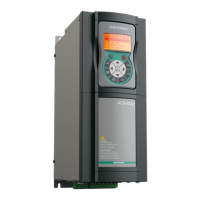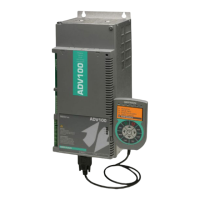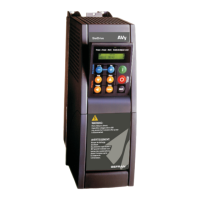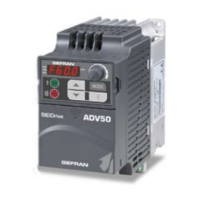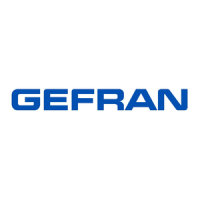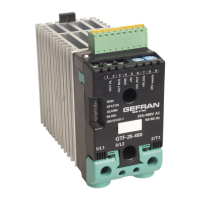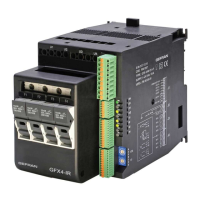AGL50-EV 29
10
Acceleration
5 6 7
a
b
b
a
P.440 Freq Thr1
S.201 Freq Ref1(F.101)
S.200Freq Ref0 (F.100)
Deceleration (**)
Jerk dec ini (**)
Jerk dec end (**)
Jerk dec end (**)
Jerk dec ini (**)
Deceleration (**)
I.000 Enable
I.001 Run Fwd
XOR
I.002 Run Rev
I.003 ... I.006
Freq Sel 1...4
D.007 Actual
speed
(Motor speed)
[51] Run
contactor
(*)
[45] DC-
braking
(Motor)
(*)
[55] Lift
start (*)
(*): See 7.2.1
(**) S.230 ... S.245
[54] Brake
contactor
(*)
Fig. 7.3 – Detailed stopping sequence
a) S.260 Lift Stop Mode = [0] DC brake at stop
b) S.260 Lift Stop Mode = [1] Normal stop (Default)
7.2.1 Lift-dedicated digital output functions
Several specic functions can be programmed on the drive digital outputs, in order to check the correctness of the lift
sequence and to improve the interaction with the external sequencer. Here follows a list of the functions that can be
useful in lift applications.
DO Programming code Function description
[0] Drive ready TRUE when the drive is ready to accept a valid RUN command. Meaning that the drive
is not in alarm, the dc-link pre-charge is completed and the safe-start interlock logic is
cleared.
[1] Alarm state TRUE when the drive is in alarm status. Alarm reset is needed to restore operation
[2] Not in alarm TRUE when the drive is not in Alarm status.
[3] Motor run TRUE when the inverter output bridge is enabled and operating.
[4] Motor stop TRUE when the inverter output bridge is not operating (all six switches are open).
[5] Rev rotation TRUE when the motor is rotating counter-clockwise.
[31] Freq > thr1 TRUE when the motor speed (measured or estimated) is above the threshold dened
by parameters P.440 and P.441.
[32] Freq < thr1 TRUE when the motor speed (measured or estimated) is below the threshold dened by
parameters P.440 and P.441. This function is normally used to detect zero speed (see
sequence in Fig.7.2).
[45] DC braking TRUE when DC injection is in progress.
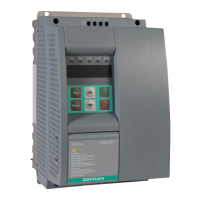
